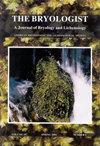亚热带叶片群落中一些常见的棘皮类群形成的小叶生地衣菌体结构
IF 1.5
4区 生物学
Q4 PLANT SCIENCES
引用次数: 0
摘要
摘要在潮湿的热带和亚热带地区,许多不同的地衣形成真菌分支独立地作为活树叶的小枝殖民者。由于技术上的困难,它们微小的甲壳菌体的解剖结构没有被详细比较。在本研究中,我们应用SEM-BSE成像对嵌入菌体的切片块进行了研究,这些菌体代表了六个具有单细胞绿藻伴侣的叶面苔藓形成真菌的鳞片分类群。我们比较了我们的观察结果与那些在以前的研究中获得的小叶Gomphillaceae (Ostropales),利用类似类型的藻类伙伴。菌体的上表面是一层典型直径的分枝菌丝,这与以前在叶生的Gomphillaceae中发现的大部分脱细胞的表皮不同。白血肿的特殊之处在于完全没有覆盖层。菌体基本上是无分层的,藻类共生体不局限于任何明显的层。小叶蕨科的原体是由上覆的毛层衍生而来,而在本研究的棘皮蕨类群中,原体是由菌体上表面或下表面连续的菌丝衍生而来,或者两者都有。这一发现表明,在不同的分类群中,形成地衣的真菌原体可能代表了发育起源不同的结构。本文章由计算机程序翻译,如有差异,请以英文原文为准。
Structure of foliicolous lichen thalli formed by some common lecanoralean taxa in subtropical leaf communities
Abstract. Numerous distinct clades of lichen-forming fungi have independently specialized as foliicolous colonists of living leaves in the humid tropics and subtropics. Because of technical difficulties, the anatomy of their minute crustose thalli has not been compared in detail. In the present study, we applied SEM-BSE imaging to sectioned blocks of embedded thalli representing six lecanoralean taxa of foliicolous lichen-forming fungi with unicellular green algal partners. We compared our observations with those obtained in a previous study of foliicolous Gomphillaceae (Ostropales), which utilize a similar type of algal partner. The upper surface of the thalli was a mostly continuous layer of mycobiont hyphae of typical diameter, unlike the largely acellular epilayer found previously in the foliicolous Gomphillaceae. Byssoloma leucoblepharum was exceptional in lacking a covering layer altogether. Thalli were essentially unstratified, with algal symbionts not confined to any distinct layer. Whereas the prothallus of foliicolous Gomphillaceae was derived from the overlying epilayer, in the lecanoralean taxa examined here the prothallus was derived from hyphae continuous with either the upper surface of the thallus or the lower surface, or both. This finding suggests that the prothallus of lichen forming fungi may represent structures of developmentally different origins in different taxa.
求助全文
通过发布文献求助,成功后即可免费获取论文全文。
去求助
来源期刊

Bryologist
生物-植物科学
CiteScore
2.40
自引率
11.10%
发文量
40
审稿时长
>12 weeks
期刊介绍:
The Bryologist is an international journal devoted to all aspects of bryology and lichenology, and we welcome reviews, research papers and short communications from all members of American Bryological and Lichenological Society (ABLS). We also publish lists of current literature, book reviews and news items about members and event. All back issues of the journal are maintained electronically. The first issue of The Bryologist was published in 1898, with the formation of the Society.
Author instructions are available from the journal website and the manuscript submission site, each of which is listed at the ABLS.org website.
All submissions to the journal are subject to at least two peer reviews, and both the reviews and the identities of reviewers are treated confidentially. Reviewers are asked to acknowledge possible conflicts of interest and to provide strictly objective assessments of the suitability and scholarly merit of the submissions under review.
 求助内容:
求助内容: 应助结果提醒方式:
应助结果提醒方式:


